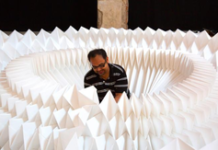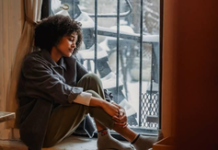By Sukant Deepak
New Delhi– When internationally renowned artist Jitish Kallat stayed in self-isolation in his studio after a recent trip to the US, what began at the time as a purely accidental activity slowly developed into his new series of drawings titled ‘Circadian Study’ (contact tracing) that opened at Nature Morte’s online Viewing Room on August 11. In an interview with IANS, among other things, the artist talks about his concerns, what drives him towards a particular medium, his ‘process’ and “learning to value patience alongside persistence”.
Q: You had your first show when you were in your early 20’s. How do you look back at the trajectory? What concerns that have changed and which ones have remained constant?
A: My first solo exhibition P.T.O. took place at Gallery Chemould and at Prithvi Gallery. I was about 22- years- old at the time. As I look back, I recall asking myself some probing existential questions through the work… thinking about ideas of ancestry, which were at once family ancestry and a larger cultural ancestry, but also the specific artistic ancestry from which one descends. The ideas of time, death and transience recurred in those early works and they have remained central to much of my work in later years.
Q: Painting, large-scale sculpture, photograph, installation, video — you work with different mediums… What makes you decide on a particular medium and what drives your choice? It’s hard not to ask — is there a favourite one?
A: Well, I would not say that I feel any preferential hierarchy for any medium over another… except for it’s connection with the initial artistic impulse that propelled one to make the work. Materials have their intrinsic, innate properties enshrined in them that generate specific physical sensations, experience or “qualia” in the viewer. As artists, it is the unlocking of these material properties in the medium that allows us to develop a language with which to connect with the viewer.
Q: So, Circadian Studies was made during a time of self-imposed isolation. But do you often self-isolate while working? If yes, how was this different?
A: Around mid-March, I had just returned from the US and was in isolation for fourteen days at my alternate studio, which is across the street from my home. What began at the time as a purely accidental activity slowly developed into the Circadian Study drawings. As such, both my artist-wife Reena Kallat and I don’t socialize much, enjoying our private studio routines and a degree of isolation. But this was unusual as I was living across the street and wasn’t meeting anyone including immediate family. These are indeed extraordinary times.
Q: And what is your ‘process’?
A: Broadly speaking, there is never a single process to my work. A particular work such as the video work ‘Forensic Trail of the Grand Banquet’ (2010) might involve spending days in a doctor’s radiology lab while a ‘Rain Study’ would have me holding out sheets of paper to the sky during rain where descending raindrops register images that evoke distant interstellar vistas… Some works like ‘Covering Letter’ have technological intervention, while a work such as the ‘Circadian Studies’ emerge out of an interplay between the sun, a fallen tree stem and the paper. The drawings are formed by red and green lines, each registering a position of the sun relative to the tree-stem at different moments, by recording the shifting shape of the moving shadow.
Q: You curated the Kochi Biennale a few years back. It’s one of the few major art events that is still being organised in these times of a pandemic. What are your thoughts on that?
A: Every edition of the Kochi Biennale has had its own share of unique challenges. One must note the resolve of the foundation to announce the opening of the next edition as planned. I am sure they know fully that this will be a complex and deeply demanding undertaking. A Biennale is a petri-dish to incubate and celebrate creative uncertainty… and I’m sure the team is aware that it is of utmost importance to prioritise safety and proceed in a spirit of caution, determination and adventure.
Q: Do you feel we need more such art fests in different parts of the country, maybe at a smaller scale?
A: For a large country like India, we hardly have any artistic infrastructure. We need more museums and institutions; additionally recurring events such as biennales create a sense of community and social cohesion.
Q: You are a pass-out from Sir JJ College of Art. Students from art schools across the country point out the outdated syllabus and teaching methodology. What is your view on this?
A: Our art education system is outdated and not reflective of changing times. It urgently needs radical reform at the level of syllabus infrastructure and imagination.
Q: And what are you working on next?
A: A few complex pieces that may take a while to realize. Works such as ‘Covering Letter’ (‘Terranum Nuncius’), ‘Epilogue’ and ‘Public Notice 3’ take years to self-organise as ideas, and then take just as long to execute. But with time, I’ve learned to value patience alongside persistence. (IANS)














